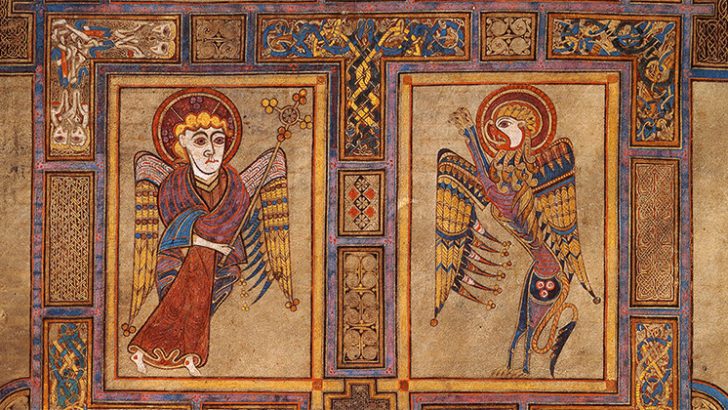Mainly About Books by the books editor
At this time of year a long queue snakes around the square in front of Trinity College’s Old Library, those in it waiting patiently to gain access to see the Book of Kells. Other ancient manuscripts are preserved in Ireland, some of which can be visited online. But the Book of Kells is Ireland’s great treasure, indeed a treasure of world culture.
We are aware of the book as an example of the illuminated book in early Christian times in these islands. This is where a great tradition, so to speak, began. But we rarely think about how it progressed, or where and how it ended.
In the centuries when books were made by hand manuscripts were costly, even without illustrations. Those with illustrations, often the work of one or two artists, were unique. From the 8th Century onwards such books were regularly created. A few achieved astonishing levels of virtuosity.
One such is the Livre des Merveilles, a compilation of accounts of medieval travellers’ accounts of Asia, which then accounted for much of the ‘known world’. This book illustrated the wonders and curiosities of Asia as described by Marco Polo, Caprini and other authentic reporters, and the fictional travels of Sir John Mandeville, which drew so heavily on them.
Nature of the world
The images are quite enchanting. They have a direct simplicity, but a seriousness which is quite profound. They were an attempt to explain the nature of the world, and will always be of interest to both the scholar and the ordinary reader.
The Book of Kells, however, was a liturgical book. And liturgical and devotional books have always lent themselves to rich decoration.
The most astonishing of these devotional books is the Très Riches Heures (c. 1414) made for the Duc du Berry. In this as the seasons pass a series of paintings illustrate the ordinary life of late medieval France. As with the book on Asia, the pages give insights into the life of the time. But here a sense of real life, rather than fantasy dominates. What is interesting, too, is that all levels of society are shown from the peasant in the fields to the lord in his chateau.
(The sorts of lives that lay behind these images are wonderfully explored in that classic book by Eileen Power, Medieval People. a book to sit on your shelf with Helen Waddell’s The Wandering Scholars.)
In the later middle ages and the early Renaissance there were many illuminated masterpieces produced. But it was the introduction into Europe of printing with moveable types (developed over the preceding centuries in East Asia) after 1450 that transformed the making and distribution of books. The colour possibilities of printing were limited initially, and took centuries to develop and are still being developed.
But the illuminated book now became the province of the artist. One of the most extraordinary creations of the period is now preserved in the J. Paul Getty Museum in Los Angeles. This is one of the most precious books of the European renaissance.
Earlier work
In 1561 a master calligrapher named Georg Bocskay was commissioned by the Holy Roman Emperor Ferdinand I to create the Mira Calligraphiae Monumenta (The Model Book of Calligraphy). This itself was a remarkable book.
But around 1590 Ferdinand’s grandson, the extraordinary Rudolf II, commissioned Joris Höfnagel to illuminate the earlier work.
This he did with images largely of plants and animals, an extraordinary medley of script and image, a masterpiece of calligraphy and miniature painting.
If the Book of Kells was a miracle of art from an age of religious belief – a similar book seen in Kildare by Gerald de Barri at the time of the Norman invasion was called “the work of angels” – this little book was a masterpiece of an age of individualism, and a passion for new observations of the world, expressed by the human hand and eyes.
One wonders what will be the digital ages’ equivalent, and will it have the lasting power of these earlier creations of soul and spirit; will Japanese tourists queue around the block at some future date to them? One wonders.


 Peter Costello
Peter Costello